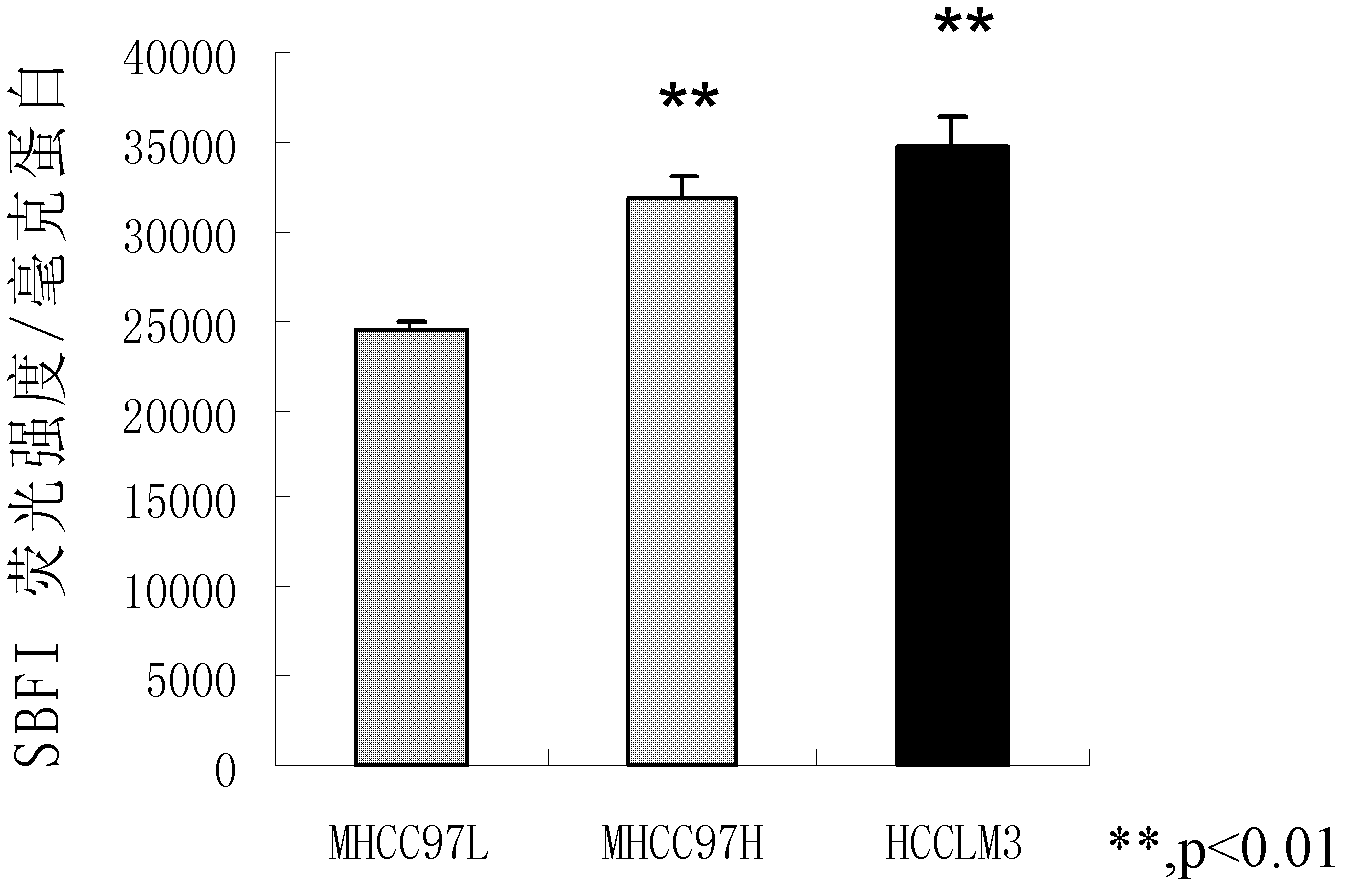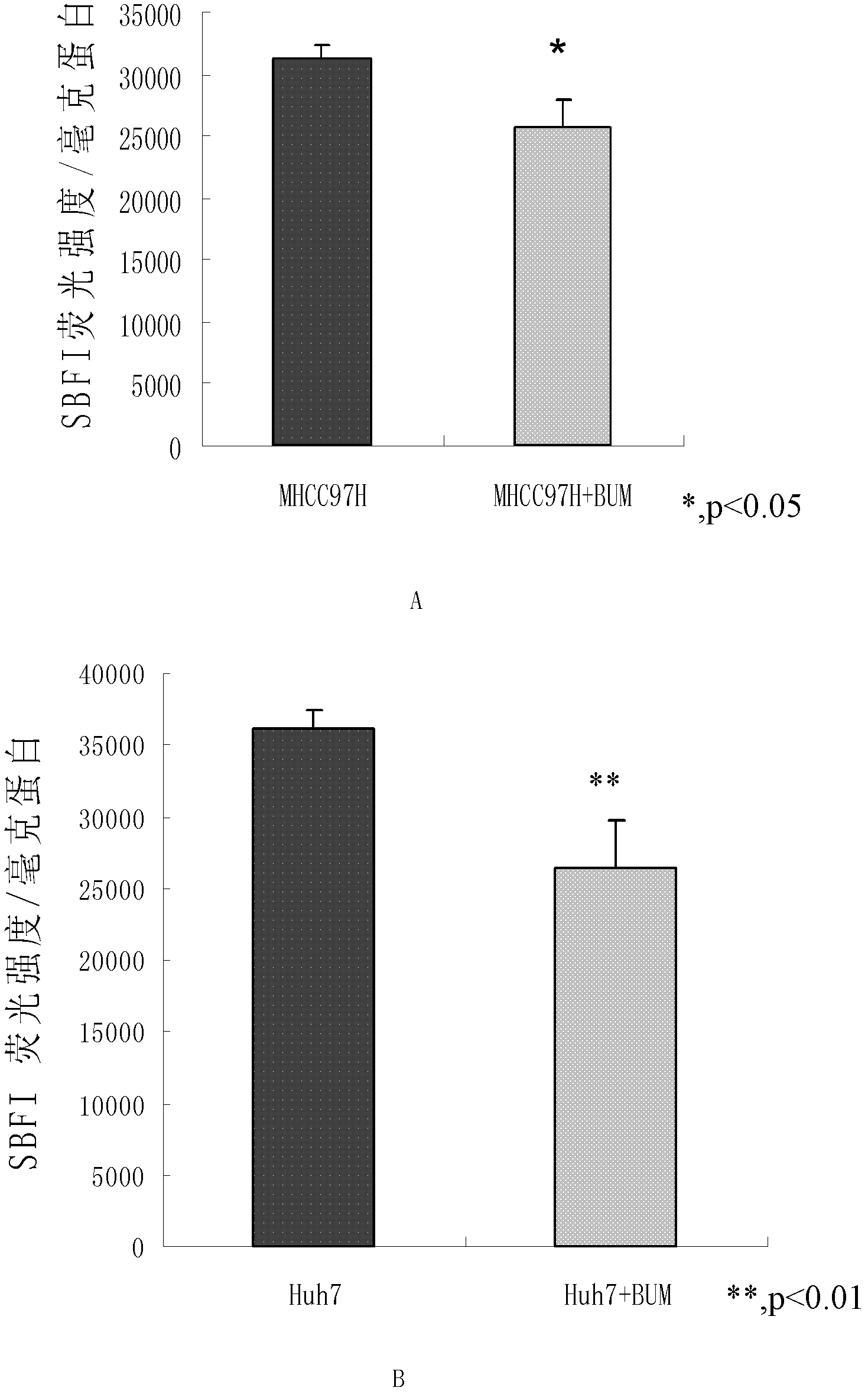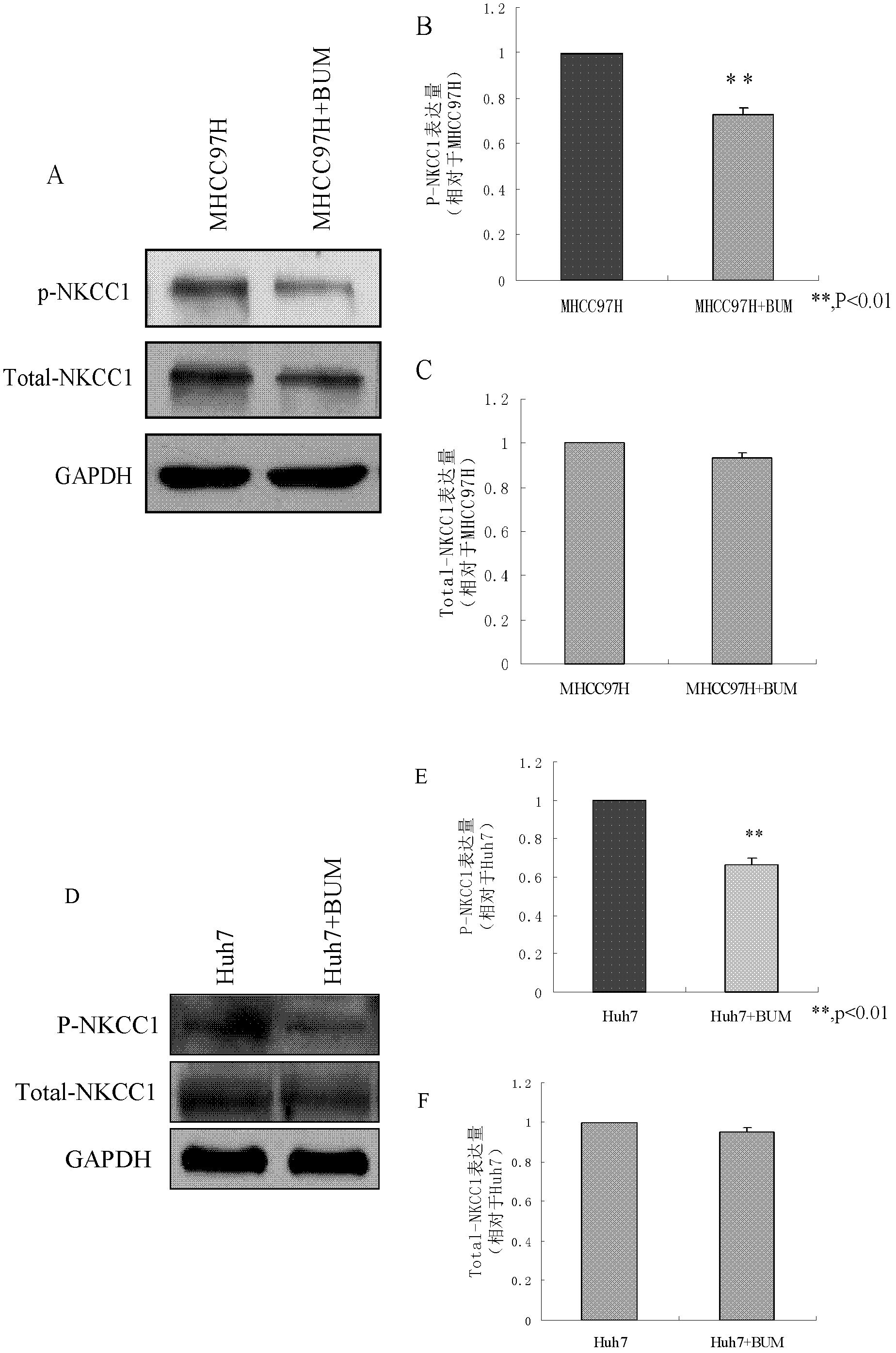Application of bumetanide in inhibition of hepatoma cell transfer
A technology of liver cancer cells and cells, which is applied in the direction of tumor/cancer cells, animal cells, vertebrate cells, etc., can solve the problem of renal tubule ineffectiveness and achieve the effect of inhibiting proliferation
- Summary
- Abstract
- Description
- Claims
- Application Information
AI Technical Summary
Problems solved by technology
Method used
Image
Examples
Embodiment 1
[0031] Example 1. Comparison of the expression of NKCC1 activity in liver cancer cell lines with different metastatic abilities
[0032] In this example, the expression of NKCC1 activity in different liver cancer cell lines was compared by detecting the sodium ion content in the protein solution. For the relevant mechanism, see the literature AR.Jayakumar, ML.Liu, M.Moriyama.et al.Na-K-Cl Cotransporter-1 in the Mechanism of Ammonia-induced Astrocyte Swelling. The Journal of Biological Chemistry. 2008, 283(49): 33875.
[0033] MHCC97L, MHCC97H and HCCLM3 are respectively operated as follows:
[0034] 1. Divide cells into 2×10 5 Inoculate in a six-well culture plate at a density of cells / ml, inoculate 2ml of cell suspension in each well, and place at 37°C, 5% CO 2 Cultivate in an incubator; after the cells grow to 80-90% confluence, discard the liquid and add DMEM high glucose culture at 37°C, 5% CO 2 Continue culturing for 30 min in the incubator.
[0035] 2. Discard the cu...
Embodiment 2
[0039] Example 2. Detection of the effect of bumetanide on the activity of NKCC1 in liver cancer cells
[0040] 1. Fluorescence spectrophotometer detection
[0041] 1. Liver cancer cell line MHCC97H
[0042] (1) Liver cancer cell line MHCC97H was divided into 2×10 5 Inoculate in a six-well culture plate at a density of cells / ml, inoculate 2ml of cell suspension in each well, and place at 37°C, 5% CO 2 Incubator cultivation.
[0043] (2) After the cells grow to 80-90% confluence, discard the liquid and divide into two groups:
[0044] The first group (MHCC97H): add DMEM high glucose medium;
[0045] The second group (MHCC97H+BUM): add DMEM high-glucose medium containing 50 μM bumetanide;
[0046] At 37°C, 5% CO 2 Continue culturing for 30 min in the incubator.
[0047] (3) Discard the medium, add DMEM containing 0.05% (volume percent) pluronic acid and 10 μM sodium binding benzofuran isophthalate acetoxy methyl esters-AM (SBFI) to culture at 37°C, 5% CO 2 Incubate in th...
Embodiment 3
[0079] Example 3. Effect of bumetanide on proliferation ability of liver cancer cell lines MHCC97H and Huh7 cells in vitro
[0080] 1. Liver cancer cell line MHCC97H
[0081] 1. The liver cancer cell line MHCC97H in the logarithmic growth phase (70%-80% confluence) was digested with 0.25% trypsin (Hyclone Company) to form a cell suspension.
[0082] 2. Divide the wells in the 96-well plate into two groups:
[0083] The first group (MHCC97H): add DMEM high-glucose medium containing 10% (volume percentage) FBS, then inoculate cell suspension, and the cell concentration is 1000 cells / μl;
[0084] The second group (MHCC97H+BUM): Add DMEM high-glucose medium containing 10% (volume percentage) FBS and 50 μM bumetanide, and then inoculate the cell suspension with a cell concentration of 1000 cells / μl;
[0085] Placed at 37°C, 5% CO 2 Culture in the incubator for 12 hours.
[0086] 3. Use the CCK-8 kit to measure the absorbance of each well at the OD450nm of a microplate reader on...
PUM
 Login to View More
Login to View More Abstract
Description
Claims
Application Information
 Login to View More
Login to View More - R&D
- Intellectual Property
- Life Sciences
- Materials
- Tech Scout
- Unparalleled Data Quality
- Higher Quality Content
- 60% Fewer Hallucinations
Browse by: Latest US Patents, China's latest patents, Technical Efficacy Thesaurus, Application Domain, Technology Topic, Popular Technical Reports.
© 2025 PatSnap. All rights reserved.Legal|Privacy policy|Modern Slavery Act Transparency Statement|Sitemap|About US| Contact US: help@patsnap.com



